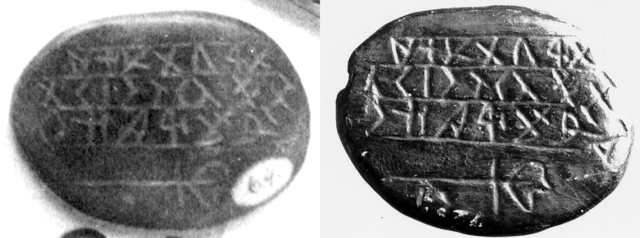
In 1838, during an archaeological excavation into the 2,000-year-old Grave Creek Mound, a small piece of polished sandstone bearing some twenty-five unknown characters was discovered among the several human skeletons and other artifacts within the upper vault. However, the exact details of the discovery and authenticity of the stone have since been hotly debated as several different published accounts of how and when the stone was discovered and by whom, seem to heavily cloud the truth even in the beginning.
In 1845 Henry Rowe Schoolcraft an ethnologist would be the first to examine the stone. His correspondence with what he called “noted antiquarians”, experts on the subject of ancient writings would reveal that the inscription contained “four characters corresponding to the Ancient Greek; four Etruscan; five Runic; six ancient Gallic; seven old Erse; ten Phoenician; fourteen old British; sixteen Celtiberic, with some resemblance to the Hebrew”.
In the late 1870s, M.C. Reid devised an experiment to prove that the characters were not alphabetic. He contracted the help of four people, each with a different background, to create for him “twenty or more arbitrary characters not resembling any figures or alphabetical characters known to them”, utilizing only “straight lines or combinations of straight lines”. The product of their attempts would resemble characters found in Old World alphabets. Upon review of his findings, Reid stated that was “compelled to conclude that there is nothing in the form of the characters of the Grave Creek Stone which require us to decide that they are old, that they are alphabetical, or if alphabetical that they are derived from any known alphabet”
In 2008, anthropologist David Oestreicher suggested that the inscription had been forged by James W. Clemens, a local physician and financier of the original excavation. Oestreicher had uncovered a 1752 book by a Spanish historian, “An Essay on the Alphabets of the Unknown Letters That Are Found in the Most Ancient Coins and Monuments of Spain” which contained the exact same markings inscribed on the stone including the “impossible sequences of characters with the same mistakes”. Presumably, Clemens copied these markings onto the stone and planted it within the mound in an attempt to exploit the site.
Comments